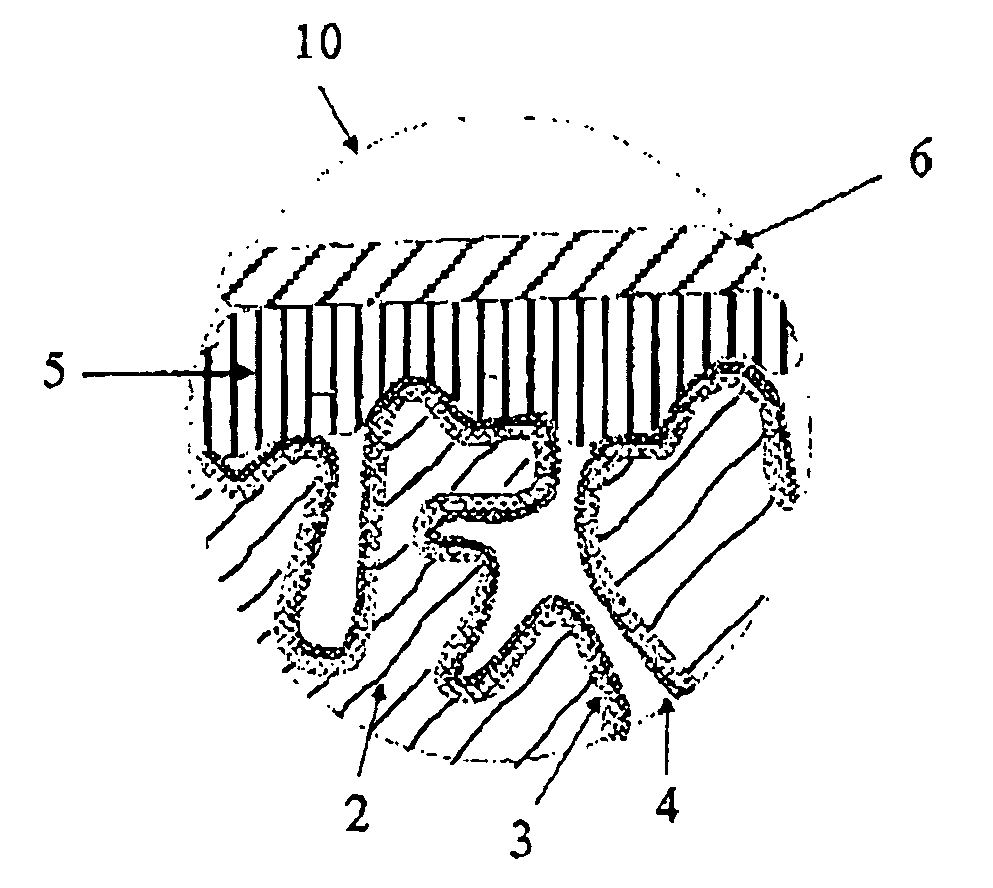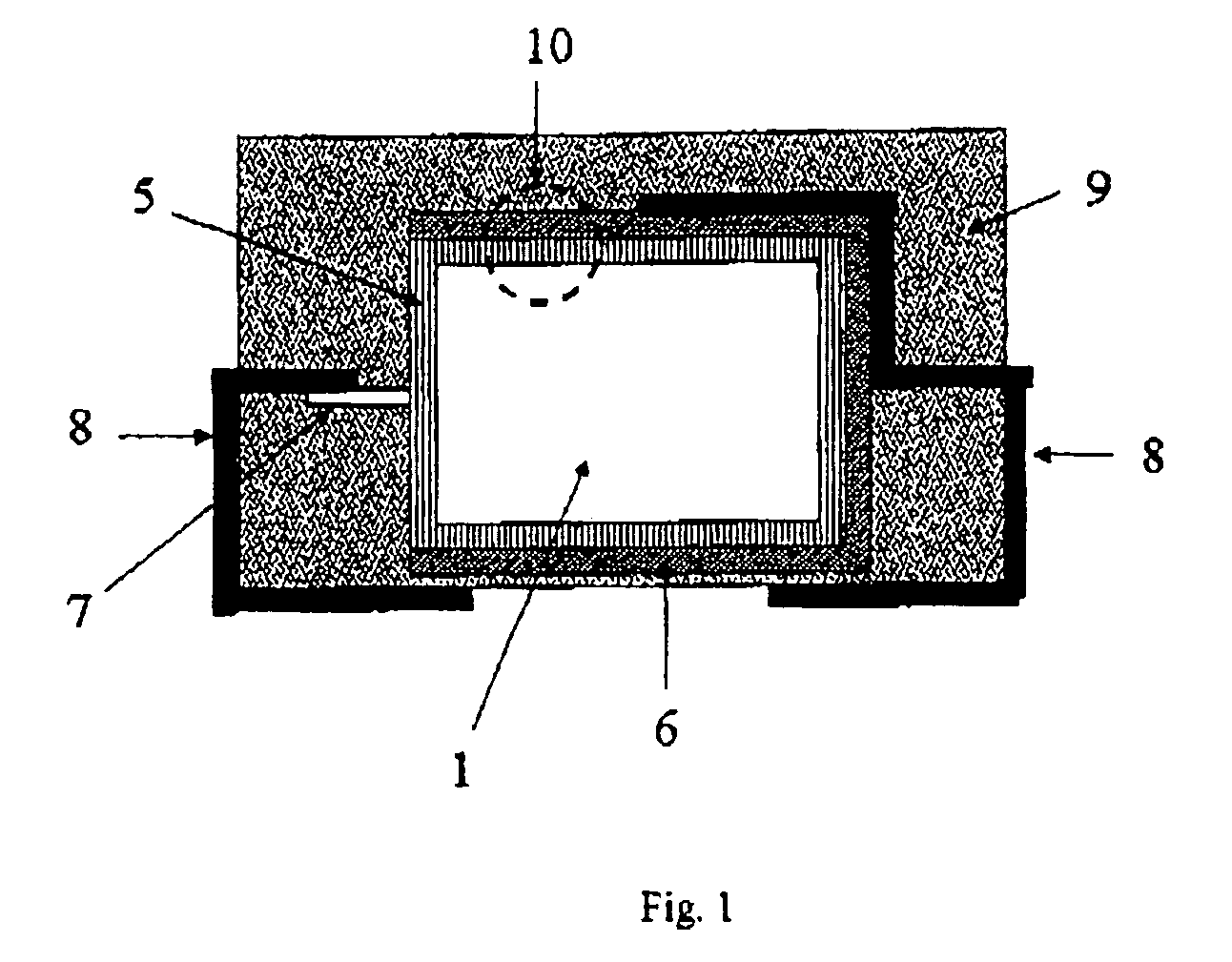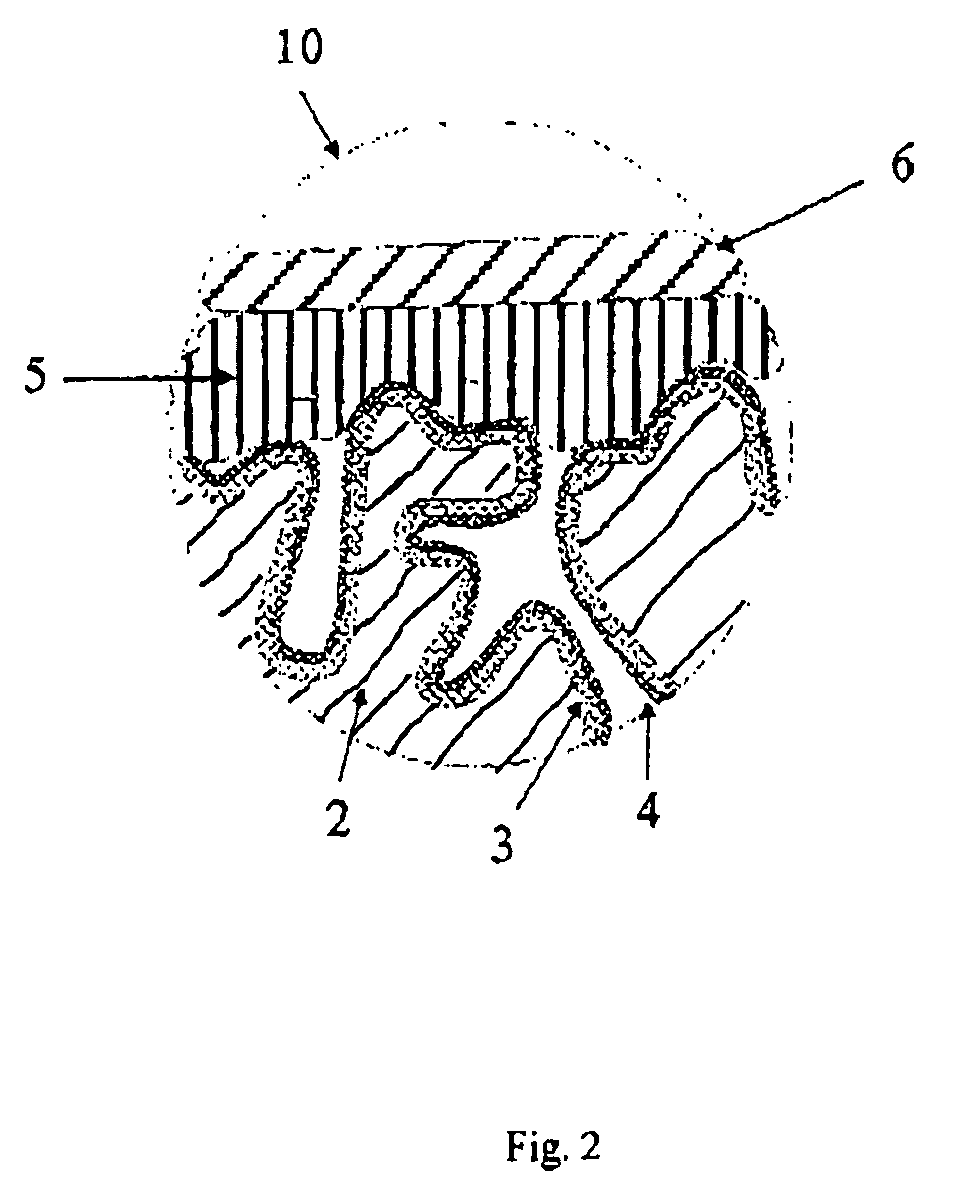Process for the production of electrolyte capacitors of high nominal voltage
a technology of electrolyte capacitors and production processes, applied in the manufacture of electrolyte capacitors, liquid electrolyte capacitors, capacitor dielectric layers, etc., can solve the problems of long production time, difficult re-forming of oxide layers, and inability to produce solid electrolyte capacitors with high nominal voltage and low residual current. , to achieve the effect of high nominal voltage and low equivalent series resistan
- Summary
- Abstract
- Description
- Claims
- Application Information
AI Technical Summary
Benefits of technology
Problems solved by technology
Method used
Image
Examples
example
Example 1
[0191] 868 g deionized water and 330 g of an aqueous polystyrenesulfonic acid solution having an average molecular weight of 70,000 and a solids content of 3.8 wt. % were initially introduced into a 21 three-necked flask with a stirrer and internal thermometer. The reaction temperature was kept between 20 and 25° C. 5.1 g 3,4-ethylenedioxythiophene were added, while stirring. The solution was stirred for 30 minutes. 0.03. g iron(III) sulfate and 9.5 g sodium persulfate were then added and the solution was stirred for a further 24 h.
[0192] After the reaction had ended, to remove inorganic salts 100 ml of a strongly acid cation exchanger and 250 ml of a weakly basic anion exchanger were added and the solution was stirred for a further 2 h. The ion exchanger was filtered off. The poly(3,4-ethylenedioxythiophene) / polystyrenesulfonate dispersion was homogenized ten times with a high pressure homogenizer under a pressure of 700 bar. The dispersion was then concentrated to a sol...
example 2
[0196] 5 g dimethylsulfoxide (DMSO) were added to 100 g of dispersion A)-1 from Example 1 and the mixture was stirred to form a dispersion A)-2. One part of this dispersion A)-2 was spin-coated on to a glass microscope slide (26 mm*26 mm* 1 mm) by means of a spincoater (Chemat Technology KW-4A) at 1,000 rpm for 5 seconds. The sample was dried at 120° C. for 10 min. Two opposite edges of the microscope slide were then coated with conductive silver. After drying of the conductive silver, the two silver strips were contacted and the surface resistance was determined with a Keithley 199 Multimeter. The layer thickness was determined with a Tencor Alpha Step 500 Surface Profiler. The specific conductivity a was determined from the surface resistance and layer thickness d from σ=1 / (Rs*d). The layer thickness was 120 nm and the specific conductivity was 483 S / cm.
example 3
[0197] Production of 0xidized Electrode Bodies:
[0198] Tantalum powder having a specific capacitance of 30,000 μFV / g was pressed, with inclusion of a tantalum wire 7, to pellets and sintered in order to form a [missing noun] having the dimensions of 4.25 mm * 3 mm * 1 mm. The porous electrode bodies 2 had an average pore diameter of 960 nm and were anodized in a phosphoric acid electrolyte at 150 V for formation of a dielectric, which corresponds to an oxide film thickness of approx. 270 nm.
[0199] 3.2 Production of the Solid Electrolyte by the Process According to the Invention
[0200] 100 g of dispersion A)-1 from Example 1, 4 g dimethylsulfoxide (DMSO) and 0.5 g 3-glycidoxypropyltrimethoxysilane (Silquest A-187, OSi Specialties) were mixed intensively in a glass beaker with a stirrer to form a dispersion A)-3.
[0201] The oxidized electrode bodies were impregnated in this dispersion A)-3 for 1 min. The impregnated electrode bodies were then rinsed under running water in order to re...
PUM
| Property | Measurement | Unit |
|---|---|---|
| Temperature | aaaaa | aaaaa |
| Fraction | aaaaa | aaaaa |
| Fraction | aaaaa | aaaaa |
Abstract
Description
Claims
Application Information
 Login to View More
Login to View More - R&D
- Intellectual Property
- Life Sciences
- Materials
- Tech Scout
- Unparalleled Data Quality
- Higher Quality Content
- 60% Fewer Hallucinations
Browse by: Latest US Patents, China's latest patents, Technical Efficacy Thesaurus, Application Domain, Technology Topic, Popular Technical Reports.
© 2025 PatSnap. All rights reserved.Legal|Privacy policy|Modern Slavery Act Transparency Statement|Sitemap|About US| Contact US: help@patsnap.com



